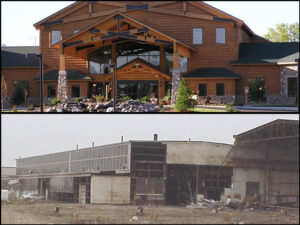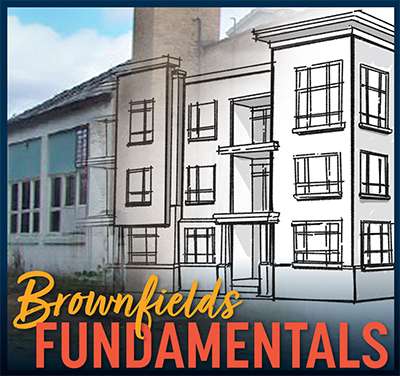The Wisconsin Department of Natural Resources (DNR) will host learning sessions for local governments on redevelopment of underused and abandoned properties, otherwise known as brownfields, on Sept. 10 in Stevens Point, Oct. 7 in Ashland, Oct. 8 in Eau Claire and Oct. 28 in Fond du Lac. The sessions are free to attend and the same content will be covered in each location.
A brownfield is a property where real or perceived contamination complicates expansion, redevelopment or reuse. Brownfields may be found in many locations throughout the state and vary in size, age and past use.
The in-person sessions will share information about resources available to support local governments in redevelopment of properties into community assets. Participants will learn how to identify brownfield sites in their community and understand the liability considerations and due diligence recommended when acquiring brownfield properties. Highlights of the sessions include an overview of assistance available to support redevelopment efforts. Representatives from local governments will also share their successful brownfield projects.
The learning sessions will also offer an opportunity for local governments to connect one-on-one with representatives from the DNR and Wisconsin Economic Development Corporation (WEDC) and ask questions about brownfield properties and redevelopment.
Session Information
Sept. 10, 2025
Mid-State College
1001 Centerpoint Dr.
Stevens Point
Time: 10 a.m. – noon
Oct. 7, 2025
City Hall
601 Main Street W.
Ashland
Time: 10 a.m. – noon
Oct. 8, 2025
L.E. Phillips Memorial Library
400 Eau Claire St.
Eau Claire
Time: 10 a.m. – noon
Oct. 28, 2025
Fire Station #1 Training Room
815 S Main Street
Fond du Lac
Time: 10 a.m. – noon
Local government officials interested in learning more about brownfield redevelopment in Wisconsin are encouraged to attend. To register, contact Thomas.Coogan@wisconsin.gov at least three days in advance of the session you plan to attend.
More information about DNR’s brownfield cleanup programs and services is available on the DNR’s brownfields webpage. The page provides access to a webinar series titled “Brownfields Fundamentals” for on-demand information on brownfield redevelopment topics.

Redevelopment in Green Bay led to Tundra Lodge.
DNR staff around the state are available to meet with community leaders, bankers, developers and private individuals to discuss brownfield projects. Reach out to schedule a Green Team meeting.

